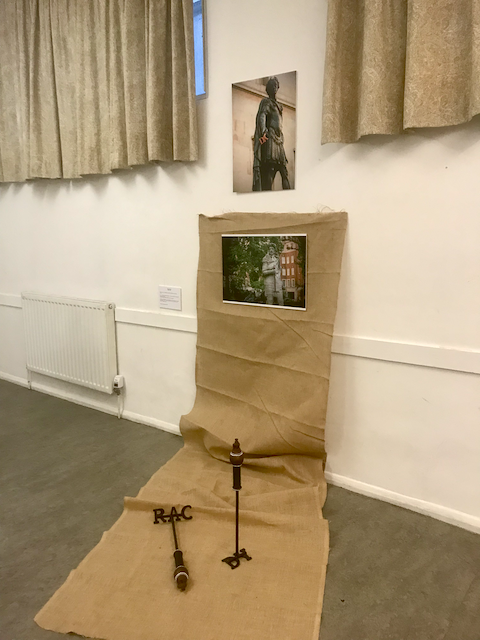
Two branding irons, one “RAC” for Royal African Company, the other “DY” for Duke of York, which people enslaved and sold by the Royal African Company were branding with.

Rastafari war garb (front)
This is a replica of a Nyahbingi Warrior Garb made by Gloria Simms, the original of which is held in the National Museum Jamaica. It was been recreated for the exhibition in London by Rachel Reid.
Nyahbingi began as a revolutionary order devoted to preserving the spiritual and cultural integrity of Africa. In Jamaica, the affiliated Rastafari were rejected by mainstream society and as a result of their poverty they resorted to using sackcloth (burlap) for clothing. Today, not only have Rastafari overcome marginalisation, wearing burlap is now taken as a symbol of their defiance of the status quo. This garb is made from natural products including burlap, gourds and woolen thread.
Jubilee Apology (film)






Two branding irons, one “RAC” for Royal African Company, the other “DY” for Duke of York, which people enslaved and sold by the Royal African Company were branding with.
Rastafari war garb (front)
This is a replica of a Nyahbingi Warrior Garb made by Gloria Simms, the original of which is held in the National Museum Jamaica. It was been recreated for the exhibition in London by Rachel Reid.
Nyahbingi began as a revolutionary order devoted to preserving the spiritual and cultural integrity of Africa. In Jamaica, the affiliated Rastafari were rejected by mainstream society and as a result of their poverty they resorted to using sackcloth (burlap) for clothing. Today, not only have Rastafari overcome marginalisation, wearing burlap is now taken as a symbol of their defiance of the status quo. This garb is made from natural products including burlap, gourds and woolen thread.
Jubilee Apology (film)